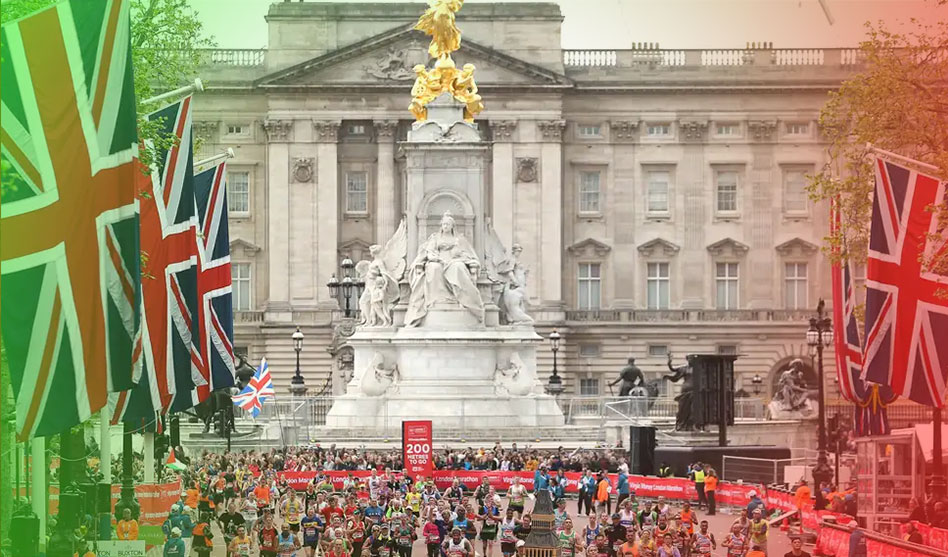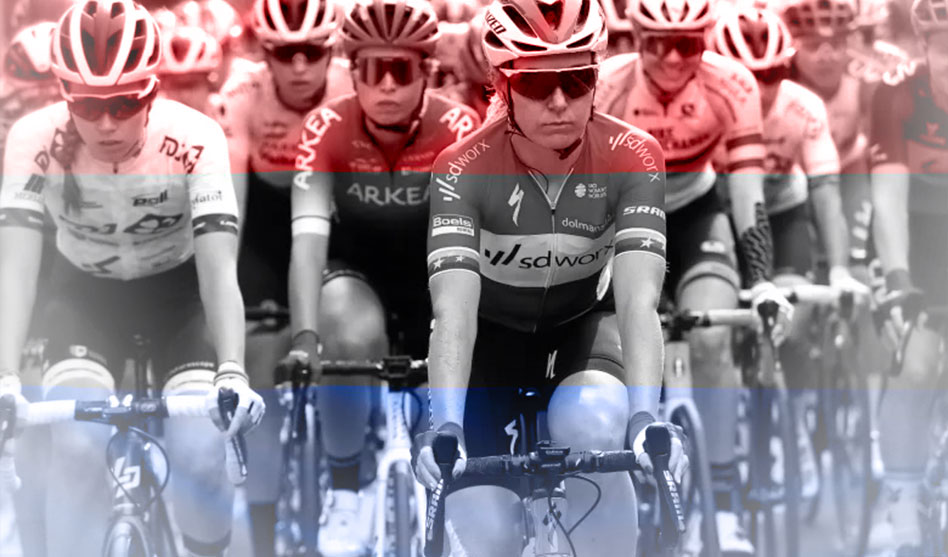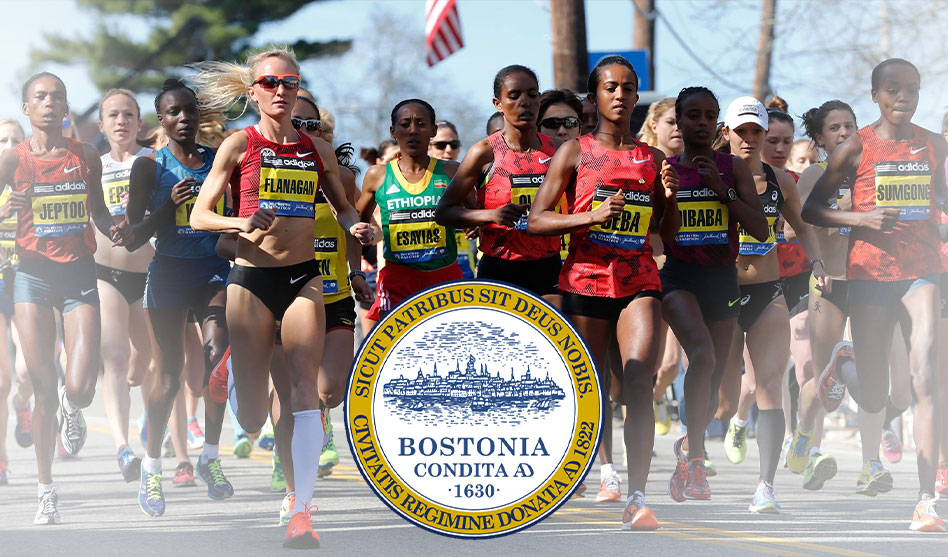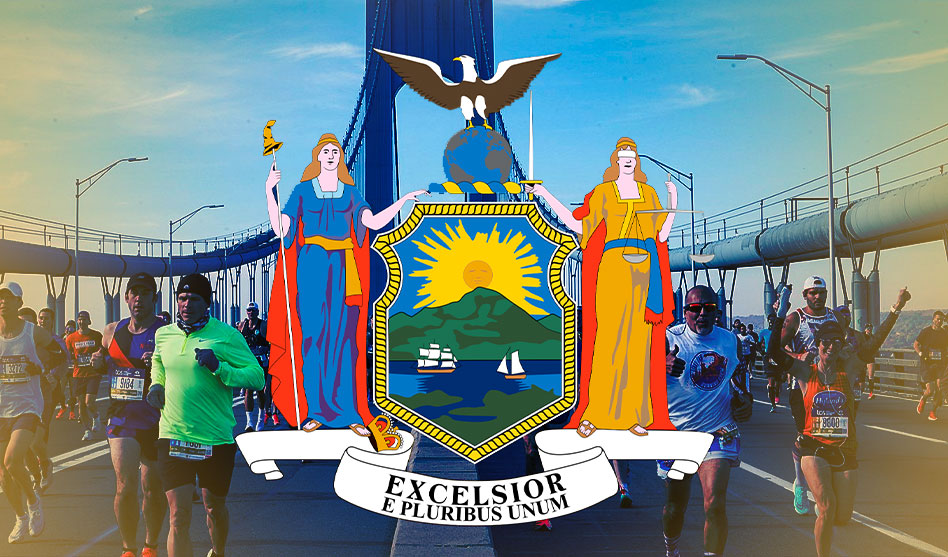Great sights and quick times may be found in one of the largest events in the globe.
The London Marathon draws competitors from the top of the elite field to regular runners looking for a personal record because of its flat course, abundance of historic sites to explore, and generous prize money (and a beautiful tour of the city).
The 2020 London Marathon was considerably unusual because of the ongoing coronavirus outbreak. It featured an elite-only field racing on a looped course inside a specially constructed “bubble.”
The World Marathon Major race will resume its customary schedule in 2021, albeit on Sunday, October 3, rather than its customary late-April date.
One of the World Marathon Majors that move a spring date to the fall is London. The Boston Marathon is slated for October 11, and the Tokyo Marathon in 2021, which is generally held in the spring, was initially planned for October as well before being postponed to March 2022.
2021 London Marathon Preview
This year in London, a record 50,000 athletes are expected to step onto the starting line. These 23 elite athletes are led by Kenyan Brigid Kosgei, the reigning London Marathon champion and holder of the marathon world record.
Shura Kitata, the 2020 champion from Ethiopia, is back to defend his title against three rivals with sub-2:03 personal records: Kenyan Titus Ekiru, Birhanu Legese, and Mosinet Geremew from Ethiopia.
The following races will take place on October 3:
- 3:50 a.m. EDT – Elite wheelchair start
- 4:00 a.m. EDT – Women’s elite start
- 4:30 a.m. EDT – Men’s elite and general start
COVID-19 Safety Measures
In the midst of the pandemic, the London Marathon is committed to providing a secure race environment. The race’s organizers have implemented the following measures:
- There will not be a baggage dropoff at the race start. Instead, runners will receive a drop bag in the mail ahead of time. Participants should pack that bag with any items they’ll need postrace, and then drop it off at the expo.
- Medals, T-shirts, and recovery food won’t be handed out at the finish. Instead, London Marathon workers will pack your drop bag with the medal, finisher’s t-shirt, and recovery items. NOTE: Even if you don’t put any postrace items in your drop bag, it’s still important to drop that bag off at the expo, so you can receive your medal, T-shirt, and recovery items.
- At the start, runners will be split into four separate assembly areas to ensure ample social distance.
- Runners are required to show proof of a negative COVID-19 rapid test result when dropping off their kit bags and picking up their bib numbers.
- The London Marathon asks all participants to bring only one supporting spectator to reduce crowding.
Date and History of Race
One of the six World Marathon Majors, the London Marathon is conducted each spring. It usually takes place in April, but due to the coronavirus pandemic in 2021, it was moved to October 3.
After racing in the New York City Marathon in 1979, Chris Brasher, a former Olympic steeplechase champion and sports journalist, and Welsh Olympian John Disley organized the marathon. Both men were inspired by the participants’ sense of community and vowed to establish a similar atmosphere in London.
The first London Marathon was held on March 29, 1981, just two years after the concept was initially proposed. At the inaugural race, 6,255 people crossed the finish line from thousands of racers. Since then, the race’s size and popularity have risen every year.
Winners of the London Marathon and their awards
Winners in a number of categories are recognized and honored in the race. The entire prize pool this year is $313,000, with $55,000 going to the men’s and women’s winners, respectively. Athletes that run a specific time or beat the course record will get additional rewards.
The following are rankings of the winners of the men’s and women’s London Marathons over the previous ten years, highlighted by four-time winners Eliud Kipchoge and Mary Keitany.
Men’s Open Division (Past 10 Years)
- 2020: Shura Kitata (ETH) 2:05:41
- 2019 Eliud Kipchoge (KEN) 2:02:38
- 2018: Eliud Kipchoge (KEN) 2:04:17
- 2017: Daniel Wanjiru (KEN) 2:05:56
- 2016: Eliud Kipchoge (KEN) 2:03:05
- 2015: Eliud Kipchoge (KEN) 2:04:42
- 2014: Wilson Kipsang (KEN) 2:04:29
- 2013: Tsegaye Kebede (ETH) 2:06:04
- 2012: Wilson Kipsang (KEN) 2:04:44
- 2011: Emmanuel Mutai (KEN) 2:04:40
- 2010: Tsegaye Kebede (ETH) 2:05:19
Women’s Open Division
- 2020: Brigid Kosgei (KEN) 2:18:58
- 2019: Brigid Kosgei (KEN) 2:18:20
- 2018: Vivian Cheruiyot (KEN) 2:18:31
- 2017: Mary Keitany (KEN) 2:17:01
- 2016: Jemima Sumgong (KEN) 2:22:58
- 2015: Tigist Tufa (ETH) 2:23:22
- 2014: Edna Kiplagat (KEN) 2:20:21
- 2013: Priscah Jeptoo (KEN) 2:20:15
- 2012: Mary Keitany (KEN) 2:18:37
- 2011: Mary Keitany (KEN) 2:19:19
- 2010: Aselefech Mergia (ETH) 2:22:38
A Quick Overview of the Course
The course, which circles the River Thames, is renowned for being fast and mainly flat and for being close to many popular tourist destinations in London.
The event has three starting areas: the “red start” in southern Greenwich Park, the “green start” in St. John’s Park, and the “blue start” on Shooter’s Hill Road. The race begins in Blackheath. The three paths intersect in Woolwich after around 2.8 miles. The majority of the sightseeing really starts on the penultimate part of the marathon, when racers travel over London’s renowned Tower Bridge.
A stunning vista of the London Eye and other well-known landmarks like Big Ben and Buckingham Palace awaits runners in the final few kilometers of the race, which passes by the imposing Tower of London on Tower Hill. Alongside St. James’s Palace in The Mall is where you’ll find the finish line.
Since the start of the race, the route has seen comparatively few changes. The finishing post was relocated from Constitution Hill to Westminster Bridge due to construction in 1982, where it remained for 12 years. It was relocated to The Mall in St. James in 1994, where it is still located today. Two changes were made in 2005: one involved rerouting slightly around mile 22 to avoid the cobbled section by the Tower of London, and the other involved switching the direction of travel around the Isle of Dogs from clockwise to anti-clockwise.
Signing up for the Race
Normally, hopeful racers can sign up for the race the following year in the spring, but COVID-19 has not yet announced the registration schedule for 2022. Later in the year, more details on how to register for the 2022 competition will be made available.
The decision to enter for charity is always up to the runner. Many large charities provide runners a set number of spots in the marathon each year in exchange for their raising a predetermined amount of money for the charity.
Moreover, citizens of the UK. who have achieved the required qualifying times may apply. A few entries are also regularly made available through competitions on the social media channels for the London Marathon and those of its sponsors and partners.
Charity and Fundraising
The London Marathon is the world’s biggest yearly fundraising event, according to Guinness World Records. Over $1.1 billion has been raised by runners since the event’s inception in 1981 for various causes. Charitable groups offer a third of all entry spots.
The race website includes a FAQ concerning the charity component of the London Marathon.
Dimensions and Makeup of the Field
One of the most well-known marathons in the world is the London Marathon. With 42,549 finishers, the 2019 field was the highest in the race’s history. If it weren’t for COVID-19, the 2020 race would probably have surpassed it. 457,861 candidates, a record, submitted applications to run in 2020.
If the 50,000 predicted runners show up at the starting line, 2021 might set a new record for the number of participants.
Eliud Kipchoge established the men’s course record in 2019 with a time of 2:02:37, which is currently the fourth-fastest marathon time in history on a course that qualifies for records. Paula Radcliffe set the women’s course record in 2003 with a time of 2:15:25.
Kurt Fearnley established the record for the men’s wheelchair course in 2009 with a time of 1:28:57, and Manuela Schär did the same for the women in 2017 with a time of 1:39:57.
How to Prepare for the Course
Because of how nearly entirely level the London Marathon route is, hill training is not a top focus while preparing for this race. Similar to any other marathon, begin increasing your mileage and stamina three to four months beforehand by combining long runs, speedwork, and rest days.

 English
English










